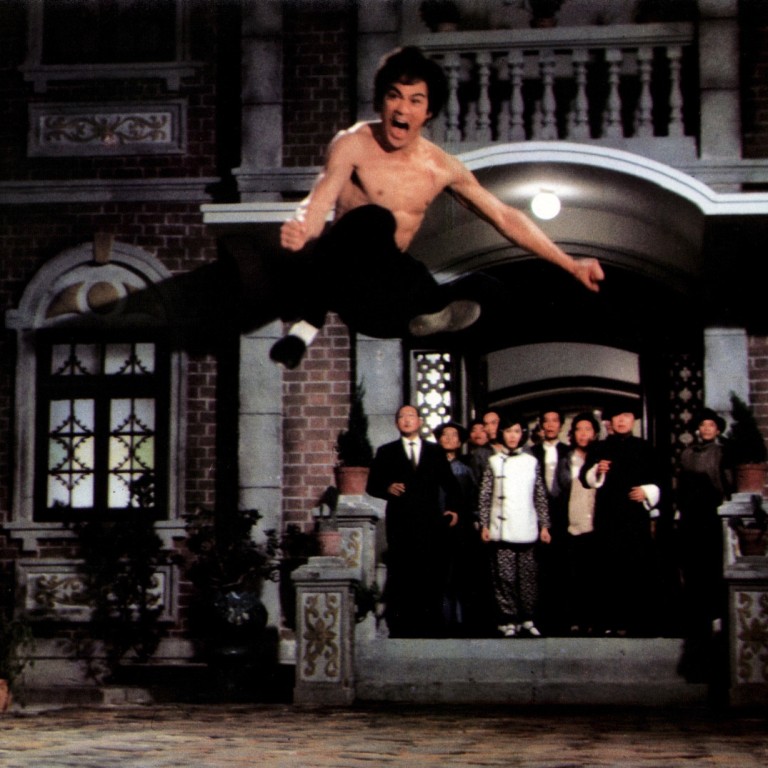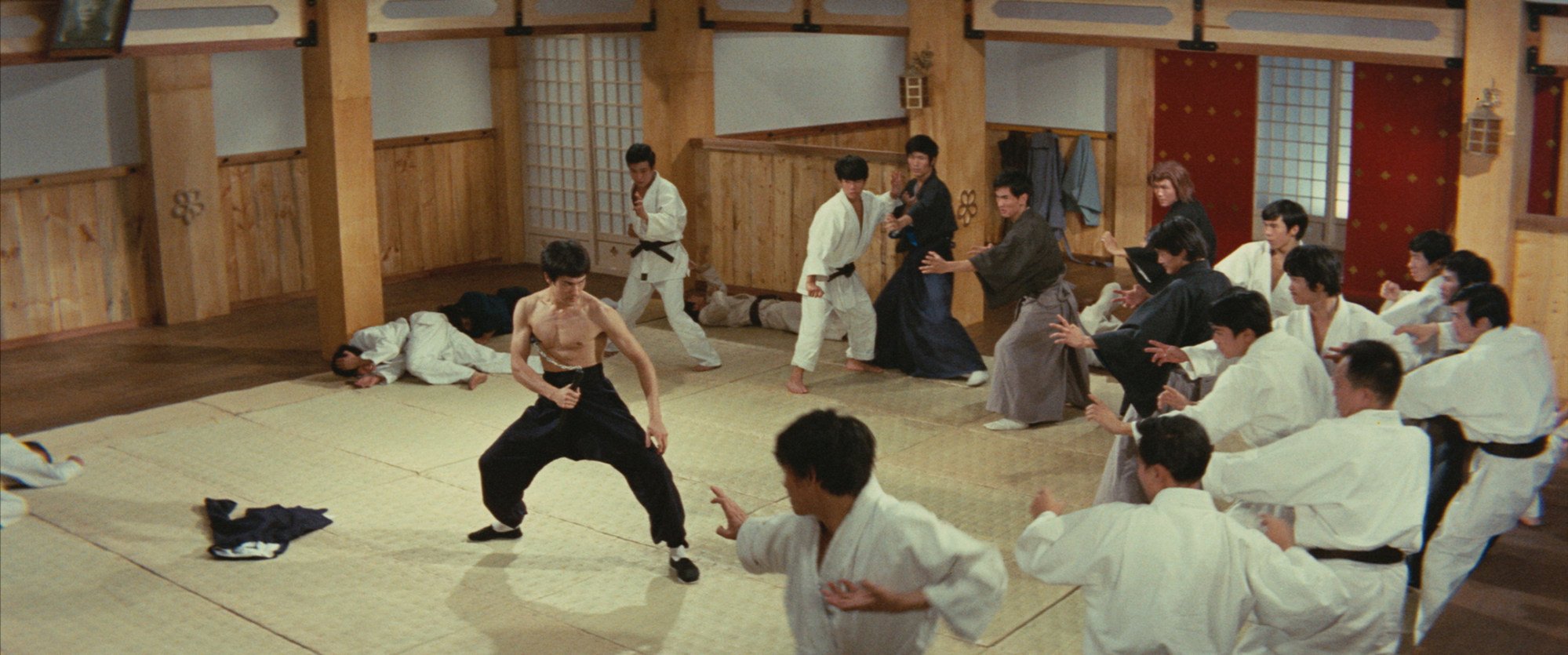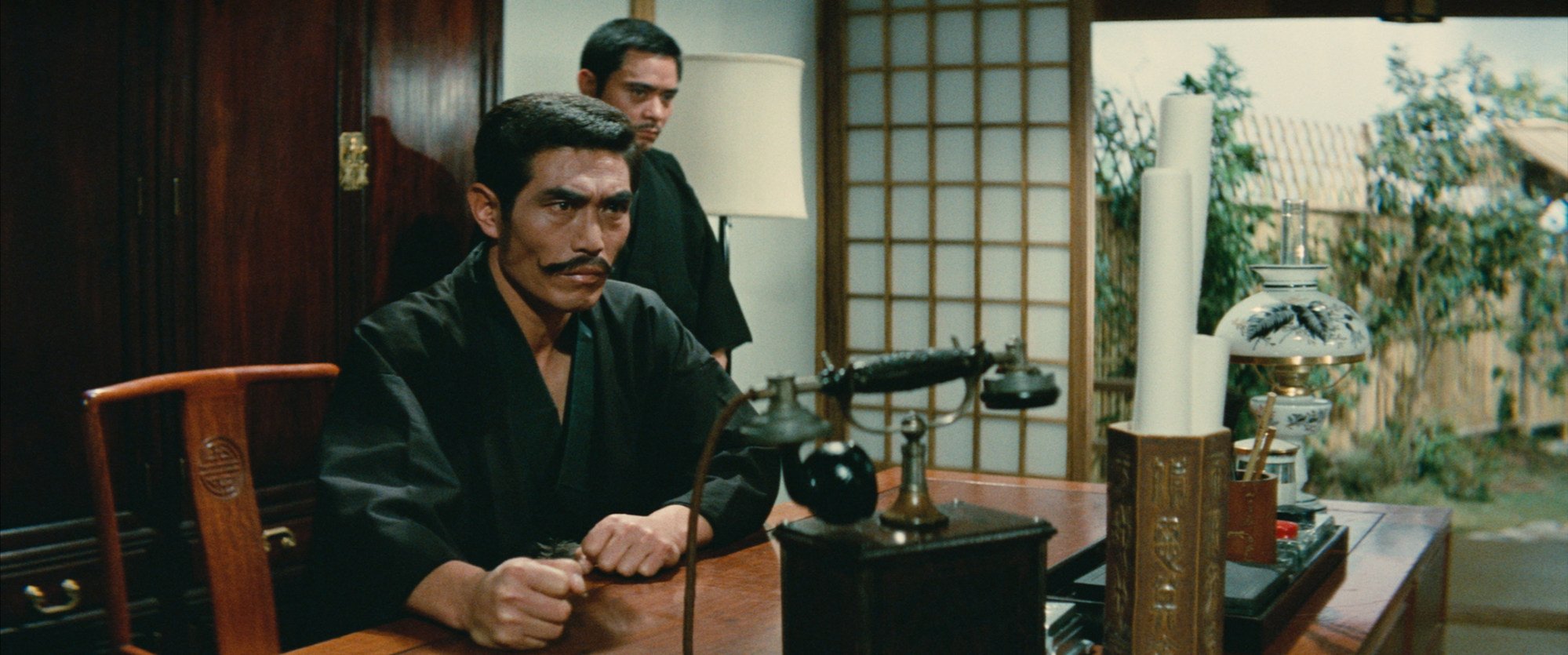
Is Fist of Fury Bruce Lee’s best film? Behind the making of the actor’s longest running film
- Fist of Fury, directed by Lo Wei, sees Bruce Lee play a martial artist avenging the murder of his master in Shanghai by a villainous Japanese karate school
- During shooting of the film, Lee’s relationship with Lo was rocky – police were called to the set once after he threatened to kill the director
Enter the Dragon is the Bruce Lee film that gets all the attention, but 1972’s Fist of Fury is probably his best film.
Bruce Lee expert Carl Fox, author of The KFM Bruce Lee Society, tells the Post the story behind Fist of Fury.
Where do you think Fist of Fury sits in the canon of Lee’s work?
It’s Lee’s longest running film and probably the fastest paced. The action scenes start pretty much straight away and then it’s one fight scene after another.
Is the ‘brotherly love’ in Hong Kong martial arts films homoerotic?
Han Ying-chieh, an established martial arts choreographer, is credited with the choreography but it’s said that Lee choreographed his own fight scenes. Is that true?
Bruce would make suggestions while shooting the fight scenes. He’d only made one film in Hong Kong at that point, but it had made him a huge star. His experience of filming various TV shows in the US had introduced him to higher production values, which he brought to his Hong Kong film career – he knew what looked good on screen.
In the beginning, Han would choreograph fight scenes and Bruce would make little observational suggestions.

One example is the opening fight in the dojo when Chen returns the “Sick Men of Asia” banner. Han choreographed it and they filmed the scene. Lee changed it around a little and had his character Chen bashing everyone’s feet and kicking them all over the mats.
Han was so impressed that he went very quiet for the rest of filming, and pretty much let Bruce have free rein.
How was Lee’s relationship with director Lo Wei while shooting this film?
This was the film that destroyed Bruce Lee and Lo Wei’s professional relationship. There had already been issues between them on The Big Boss.
Lee would call Lo by his full name on the set, which seriously irked the veteran director, who liked to be called Uncle Lo informally or Director Lo when he was working. Lee would simply shout, “Lo Wei!” which really pissed the guy off.
The press didn’t help their relationship either, as newspapers would scream headlines featuring comments by Lo that were often taken out of context.
The hot-headed Lee didn’t take too kindly to that sort of stuff and let Lo know as such on several occasions – including the infamous incident of the police being called to remove Lee when the star threatened to kill his director.
It was a tense shoot.

After this, Lee determined that his next film he would not only star in, he would be the writer, director and producer as well.
How did the Japanese audiences respond to the film’s anti-Japanese sentiment?
It did well at the Japanese box office considering the subject matter. Even Lee’s Japanese co-stars Riki Hashimoto and Jun Katsumura were surprised at the success of the film in their native country.

How did Japanese actor Riki Hashimoto, who plays the villain, get involved in the film? Using a Japanese actor was unusual at the time.
Riki Hashimoto had been a professional baseball player in Japan, playing for Daimai Orions which were owned by Masaichi Nagata, the head of Daiei Film. When he retired prematurely after an injury in 1958 at the age of 25, he became an actor.
While at Daiei Film he featured in Zatoichi Meets the One-Armed Swordsman. That crossover film was co-produced by Golden Harvest, so when it came to needing some bada** Japanese guys for Fist of Fury, Hashimoto got a call to go back to Hong Kong.
Shintaro Katsu, the Zatoichi star, was the first choice – Lee was a huge fan – but he was already contracted to appear in another film.

Shooting films in Hong Kong was different to what Riki had been used to in Japan. In Hong Kong, everything was pretty much made up on the spot and improvised, while making films in Japan was much more planned.
Like Bruce, he didn’t like Lo Wei too much; he felt that he had a self-appreciating nobility about him, and he pretty much made it clear in the beginning that the Japanese were definitely the villains of the film. The role didn’t represent an issue to Riki as he’s very accustomed to playing villains in his native Japan.
How was the film received abroad?

The reviewer, John Gillett, noted that, “the highly athletic Mr. Lee has a somewhat rudimentary and charmless acting style (all curled lips, sinister glances and clenched fists), but he performs his main function – that of keeping the action going through a series of furious karate fights – with considerable aplomb, and proves as adept with his feet as with his fists.”
He closes his review by stating, “Sadly, the production values are only moderate, with a rather uneasy fusion of studio interiors and real street locations, and the English dubbing is unusually inept.”
How did the success of the film at the Hong Kong and Asian box office affect Lee’s later career?
It affected Lee’s career immensely.

Golden Harvest boss Raymond Chow, knowing he had to keep hold of Lee at all costs but without spending the money that rival Run Run Shaw was offering his star to sign with Shaw Brothers, offered Lee a partnership and complete control of his future projects. The offer of a 50-50 partnership and complete control was an appealing offer to Lee.
In this regular feature series on the best of Hong Kong cinema, we examine the legacy of classic films, re-evaluate the careers of its greatest stars, and revisit some of the lesser-known aspects of the beloved industry.










